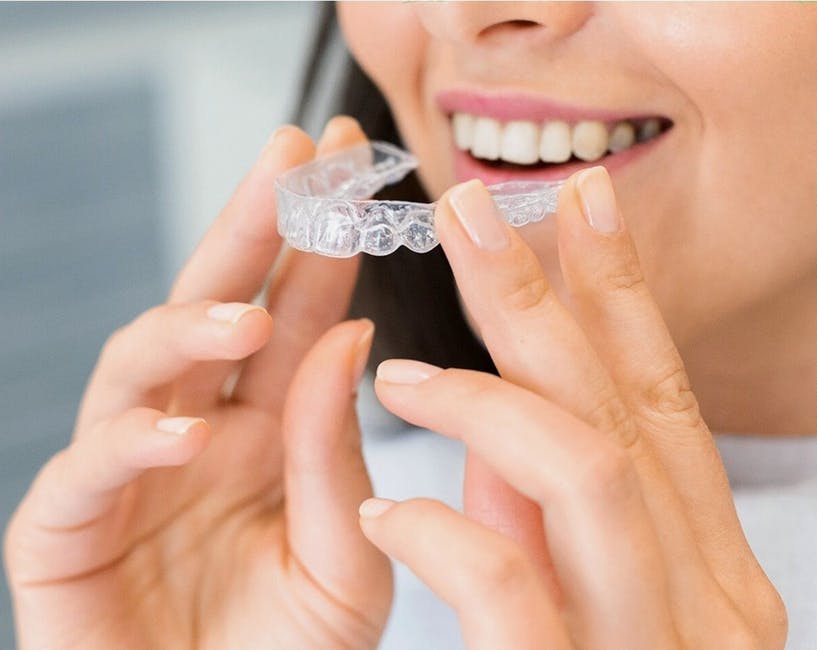A 2019 survey found that half of all Americans are insecure about their teeth. If you find yourself shying away from smiling, you may very well be one of those people.
Straight smiles often come from orthodontic treatment, but that doesn’t necessarily mean you need traditional braces. One alternative is Invisalign, a treatment that more than 12 million people have chosen to perfect their pearly whites.
You may be familiar with Invisalign, or you may want to learn more about how this oral care treatment can perfect your smile and improve your dental health. Here’s everything you need to know, including the all-important question: how long does it take to get a straight smile with Invisalign?
How Does Invisalign Work?
All Invisalign treatments start with a consultation with your orthodontist. They will take a scan of your teeth, which will be used to create your personalized set of Invisalign aligners.
These clear plastic aligners slide over your teeth to slowly move them toward their perfect position. You will wear your aligners for 20 to 22 hours each day, only taking them out to eat, drink and brush your teeth. You will sleep with your Invisalign in, too.
Every two weeks, you will swap your aligners for a new set. Each new version will be slightly different than the last, ushering your teeth closer and closer to their straightest position.
So, now you know how long you have to wear your Invisalign retainers each day and how long you wear each set of aligners. But how long does the treatment take? That’s an answer that’s a bit more complicated.
How Long Does It Take to Get Straight Smiles With Invisalign?
Everyone’s situation will be different. Some will use Invisalign to fix slightly crooked teeth, while others will use the orthodontic treatment to fix a crowded, complicated smile. Each scenario will come with its own prescription from your orthodontist.
However, in general, an Invisalign treatment lasts 6 to 12 months. As you can guess, minor issues will fall on the lower side of this spectrum — or require even less time to fix. More intensive dental issues will take a year or longer.
Here are a few scenarios that can change the length of time you’ll need to wear Invisalign.
Your Age
For starters, your age will undoubtedly affect the length of your Invisalign treatment. In short, the younger you are, the shorter it will take for Invisalign to fix your crooked teeth.
As it turns out, kids and teenagers have more malleable teeth, meaning they will move and shift into place more easily. Adults’ jaws and teeth are more solidly set in place, so they are tougher to manipulate. As such, Invisalign treatment for those in their 20s, 30s, and beyond will take longer.
On top of that, orthodontists often find that adults have more complex issues to fix with their aligners. That takes longer, too.
Consistency
Next up, the length of your treatment will depend on how consistent you are in wearing your aligners. As we said before, you need to wear them for 20 to 22 hours each day, every day.
You can skip Invisalign one day if you have a special occasion, such as a wedding. You should ask your orthodontist before doing so, but it should be okay to miss a day here and there.
However, if you find yourself forgetting to pop in your aligners regularly, you can expect your treatment to take longer than the average.
The Complexity of Your Issue
Finally, we mentioned this already, but the complexity of your orthodontic issue will ultimately determine the length of your Invisalign treatment.
A small gap in your teeth, for example, can take less than six months to fix with Invisalign. Some patients report that they have perfectly straight teeth in just six weeks. The larger the gap(s) between your teeth, though, the longer the treatment time.
Meanwhile, crooked or crowded teeth can take just six months to fix with Invisalign. It’s the more complex oral issues that will require lengthier treatments of 12 to 24 months.
Sometimes, your orthodontist can make suggestions that will speed up your Invisalign treatment, too. They may want you to wear headgear or remove teeth so that your smile can shift into position ASAP.
Which Issues Can Invisalign Fix?
On that note, we should discuss whether or not Invisalign will work for you. It won’t be the path to straight smiles for all of the potential orthodontic issues out there.
You’re likely a candidate for Invisalign if you have any of the following issues:
- Crowded teeth
- Underbite
- Overbite
- Crossbite, meaning the upper and lower jaws don’t align
- Open bite, meaning your jaw doesn’t close
- Gaps in your teeth
- A mixture of baby and permanent teeth
Of course, the best way to determine if you’re a candidate for Invisalign is to see your orthodontist. Not everyone with these issues will be a fit for this treatment.
For example, Invisalign can fix small gaps in your teeth. But a gap of more than six millimeters will be too big for Invisalign to fix. Your orthodontist will suggest a different treatment, such as braces, for this issue.
Get Straight Smiles With Invisalign
Now you know a bit more about Invisalign and what to expect from your treatment, should you choose this option. In general, patients get their straight smiles in 6 to 12 months.
Ultimately, though, you’ll want to see an expert who can determine if this is the right treatment for you and how long it will take to get you there. Click here to learn how to get started.
